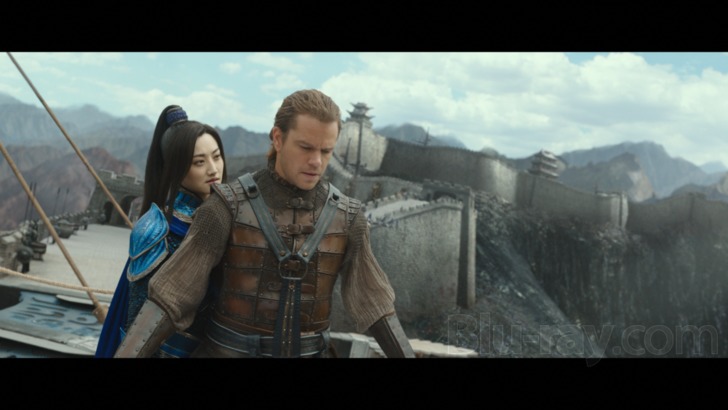

“This is a helmet design that you often see in many armored civilizations of the world, from the Aztec civilization, to Hercules or Alexander the Great’s army.” For inspiration, she looked far beyond the borders of China (where she spent 12 months working on this movie).

One of Rubeo’s favourite designs was the tiger’s-head helmet for the corps’ commander, which reveals the wearer’s face through an open, snarling mouth. “If our wall was an aircraft carrier,” says Loehr, “they would be the guys down below, manning the engines.” The engineers who work The Wall’s heavy artillery, such as its fireball-hurling trebuchets, are decked in impressive gold armour. “The blue is because when you look up form below and you see all those pillowy fabrics, you think it’s the sky.”Ĭlad in red and wielding crossbows, the Eagle Corps is the “mid-range troop,” according to producer Peter Loehr, and the corps that mercenary-turned-hero William Garin (Damon) joins, as a sharpshooting archer.Īccording to Rubeo, these marksmen wear red because it’s Zhang’s favourite colour (as the titles of his earlier films suggest) and it was “the regiment that we were perhaps going to see on the screen the most.” “They practically attack airborne,” Rubeo told Screen Rant. Armed with long spears, its warriors dive gracefully down from the ramparts on bungee cords, trailing long swathes of fabric as they stab at the monsters below. This blue-clad, entirely female corps is both crucial to the plot – being the force which the heroic Lin Mae (Jing Tian) leads – and the most striking. With Rubeo’s craftsmanship so in evidence in our upcoming Great Wall auction, we’ve taken a closer look at each of The Nameless Order’s five elite fighting units…

Rubeo (Warcraft, Thor Ragnarok), each sprawling, fantastical battle scene is rendered a kaleidoscopic treat. Thanks to Zhang’s vision, and its expert implementation by Mexican costume designer Mayes C. It was an element for which Zhang himself was responsible: the division of The Wall’s protective force, The Nameless Order, into five distinct, specialised corps – each instantly recognisable by the colour of its uniform. What makes The Great Wall so distinct is not the bizarre, lizard-like monsters it hurls at the titular structure, nor the reimagination of The Wall itself as a kind of giant, 12th century Swiss army knife of creature-killing contraptions. So while it was surprising in 2016 to find Zhang making The Great Wall – a $150 million, Hollywood co-produced blockbuster starring Matt Damon – anyone aware of his work could at least be reassured that it would look like no other blockbuster out there. Whether intimate dramas like 1987’s Red Sorghum and 1991’s Raise the Red Lantern, or spectacular wuxia epics like 2002’s Hero and 2004’s House of Flying Daggers, Zhang’s films are guaranteed to impress with their exquisite production and costume design, and in particular their meticulous and effective use of colour. Beijing-based director Zhang Yimou has long been considered a visual genius.


 0 kommentar(er)
0 kommentar(er)
